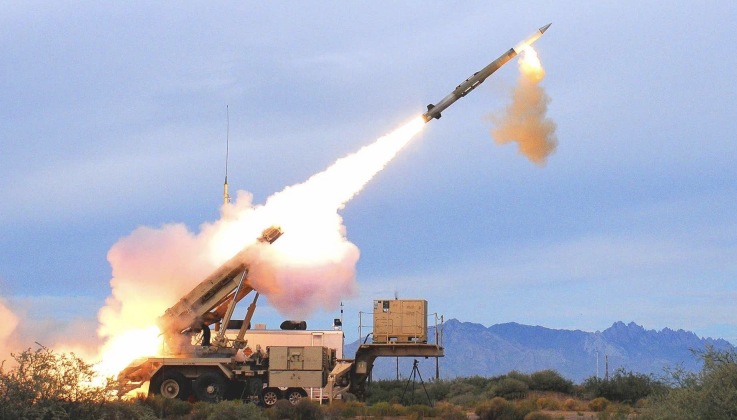News
Russian MiG-31K Fighters Launch Ballistic Missile Strikes on Ukrainian Artillery and Drone Factories: Can Ukraine Really Intercept Them?
On December 13 Russian Air Force MiG-31K strike fighters launched a major ballistic missile strike on Ukrainian military industrial targets, with facilities producing 155mm and 152mm artillery rounds and drone workshops specifically targeted. Gunpowder factories and facilities producing 125mm tank rounds were also targeted, with the Russian Defence Ministry claiming all strikes were successful. With the large majority of Ukraine’s artillery and armour using Soviet ammunition calibres, the country’s Western allies have particularly struggled to source 155mm, 152mm and 125mm munitions as these are not widely produced by Western-aligned states. Neutralising these defence industrial targets thus has potential to significant worsen the Ukraine Army’s already crippling ammunition shortages widely affecting units ranging from artillery to elite mechanised brigades. The Russian Armed Forces’ ability to launch ballistic missile attacks on Ukrainian targets has increased significantly due to surges in production of the Kh-47M2 Kinzhal air launched missile and the 9K720 surface-to-surface missile used by the Iskander-M system – both to several times pre-war levels. White House reports indicate that this has been supplemented by acquisitions of North Korean ballistic missiles, with the Korean KN-23B currency considered the most dangerous tactical ballistic missile class operational anywhere in Europe.

The December 13 strike was supported by drone and cruise missile attacks, with Russia having made growing use since late 2022 of Iranian Shahed-136 drones in particular – which from 2023 were produced in Russia under license under the designation Geran-2. Ukrainian media reported that the strike involved approximately 40 missiles, and struck targets in the Dnepr and Sumsky regions. The Kh-47M2 Kinzhal has consistently been reserved for engaging top priority targets, including positions in Ukraine’s far West due to its much longer range than other Russian tactical ballistic missiles. The Kinzhal can engage targets up to 2000km away from the point of launch, due to the tremendous kinetic and gravitational potential energy imparted to each missile by MiG-31K fighters which are the fastest and highest flying manned combat jets in the world. MiG-31s can cruise and speeds of over Mach 2 – the highest cruising speed of any fighter in the world – and can both fly and employ all their weapons in near space. This flight performance, combined with their very high weapons carrying capacities, makes MiG-31s optimal aircraft for deploying Kinzhal missiles.

Much like the Korean KN-23B, as well as the Iskander-M on which its design is based, the Kinzhal makes use of a depressed semi-ballistic trajectory and was designed to have a very high terminal speed and the ability to manoeuvre throughout its flight. These factors between them make it extremely difficult to intercept. U.S. President Joe Biden accordingly reflected the consensus view on the missile class when he stated in March 2022 shortly after its first combat use that it was effectively “impossible to stop.” Although Ukrainian sources have claimed that American Patriot missile batteries have shot down the missiles in significant numbers, this has been very seriously questioned by analysts due to the Patriot’s inherent limitations as well as the Kinzhal’s advanced capabilities. Patriot missile systems have very frequently proven incapable of intercepting basic ballistic missile attacks. In both the Gulf War and during Yemeni ballistic missile strike on Saudi Arabia in 2017, Patriot missiles were widely reported to have succeeded in blunting major attacks, only for later investigations to prove that the systems failed entirely despite facing missile attacks that were very far from sophisticated. It is expected that similar revelations regarding Ukrainian claims of Patriot missile shootdowns of Kinzhal missiles will surface once this narrative has had its desired effect on morale both within the country and in the wider Western world. Ukrainian sources have widely reported major successes in their air campaign, most famously the ‘Ghost of Kiev’ MiG-29 pilot who it was claimed shot down very large numbers of much more advanced Russian fighters. The story similarly appeared far from plausible, but was widely re-reported in the West only for it to later be conceded that it had been fabricated to bolster morale and had no basis in reality.












